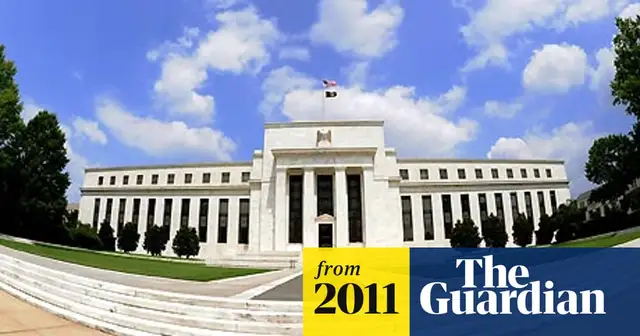Exploring the Impact of Economic Slowdowns on Interest Rates
When the economy slows down, it can have a profound effect on the interest rates. Interest rates are a key indicator of the health of an economy and are affected by a variety of factors, including the state of the job market, inflation, and the overall economic environment. When the economy slows down, it can lead to a decrease in the demand for money, which can have a direct impact on the interest rate.
The primary impact of economic slowdowns on interest rates is a decrease in the demand for money. When the demand for money decreases, the interest rate will typically follow suit. This is because when people have less money available to invest, they have less incentive to borrow, which in turn reduces the demand for loans and the interest rate. Additionally, when the economy slows down, businesses tend to be less willing to make investments and instead focus on conserving cash, further reducing the demand for money and the overall interest rate.
Inflation is another factor that can affect the interest rate when the economy slows down. When the inflation rate is higher, borrowing money becomes more expensive, which can lead to a decrease in the demand for money and, in turn, a decrease in the interest rate. Additionally, when the economy slows down, businesses may be less likely to invest, leading to a decrease in the money supply, which can also lead to a lower interest rate.
The overall economic environment can also have an effect on interest rates when the economy slows down. If the economic environment is uncertain, businesses may be less willing to invest, resulting in a decrease in the money supply and a decrease in the interest rate. Additionally, if the economic environment is weak, people may not have the money to invest, further reducing the demand for money and the interest rate.
Overall, economic slowdowns can have a significant impact on interest rates. When the economy slows down, it can lead to a decrease in the demand for money, as well as a decrease in the money supply, which can result in a decrease in the interest rate. Additionally, higher inflation and a weaker economic environment can also lead to a decrease in the interest rate.
Analyzing the Relationship Between Economic Slowdown and Interest Rates
When the economy slows down, it can have a dramatic effect on interest rates. This is because when the economy slows, the demand for money decreases, resulting in lower interest rates. Moreover, when the economy slows, businesses and consumers are less likely to take out loans, which further reduces the demand for money and lowers interest rates.
The Federal Reserve is responsible for setting the benchmark interest rate for the United States. This is often referred to as the federal funds rate. The Federal Reserve can adjust this rate in response to economic conditions. When the economy slows, the Federal Reserve will often cut the federal funds rate in order to stimulate economic activity. This in turn reduces the interest rates on loans and mortgages.
In addition to the Federal Reserve's actions, the market also plays a role in determining interest rates. When the economy slows down, investors become less willing to invest in riskier assets, such as stocks and bonds, and instead invest in safe-haven assets such as government bonds. These government bonds have lower yields, which means that the interest rates on loans and mortgages also drop.
Overall, the relationship between economic slowdown and interest rates is a complex one. On one hand, the Federal Reserve can lower interest rates in an effort to stimulate the economy. On the other hand, the market can also drive down interest rates as investors become more risk-averse. In both cases, the result is lower interest rates for businesses and consumers.
How Economic Slowdowns Affect Interest Rates
Interest rates are one of the most important economic indicators, as they tell us a lot about the current state of the economy. During an economic slowdown, when the economy is not growing at its normal rate, the Federal Reserve will often lower interest rates in order to stimulate economic activity. This is done in order to make it easier for businesses to borrow money, which can lead to increased spending and job growth. Lower interest rates also make it cheaper for consumers to borrow money, which can help to boost consumer spending.
When the Federal Reserve lowers interest rates, it is typically done in order to boost the economy. Lower interest rates make it cheaper for businesses to borrow money, which can lead to increased spending and job growth. Lower interest rates also make it cheaper for consumers to borrow money, which can help to boost consumer spending. In addition, lower interest rates can lead to an increase in the money supply, which can further stimulate the economy.
However, lower interest rates are not always beneficial. Lower interest rates can lead to inflation, which can reduce the purchasing power of consumers. In addition, lower interest rates can lead to a decrease in savings, which can reduce consumer spending. Lower interest rates can also lead to an increase in debt, as borrowers are more likely to take on more debt when interest rates are low.
It is important to note that economic slowdowns are not always accompanied by lower interest rates. In some cases, the Federal Reserve will raise interest rates in order to slow down economic growth and prevent inflation. In this case, higher interest rates can lead to a decrease in consumer spending, and can have a negative effect on the economy.
In conclusion, economic slowdowns can have a significant effect on interest rates. Lower interest rates can stimulate the economy, but can also lead to inflation and an increase in debt. Higher interest rates can slow down economic growth and reduce consumer spending. It is important to understand the implications of changes in interest rates in order to make informed decisions about the economy.
Uncovering the Correlation Between Economic Slowdowns and Interest Rates
Interest rates are an important tool for regulating economic growth. When the economy is in a recession, the central bank may lower interest rates in order to stimulate the economy. This is because when interest rates are low, consumers and businesses have more money to spend, which can create growth in the economy. This can be observed over the past several decades: when the economy slows down, interest rates tend to fall.
However, there are other factors that can influence interest rates, such as inflation and the strength of the currency. When inflation is high, central banks will often increase interest rates in order to curb spending and reduce inflation. Similarly, when a currency is strong, central banks may increase interest rates to keep it from appreciating too quickly.
It is important to note that the correlation between economic slowdowns and interest rates is complex. While it is true that when the economy slows, central banks will often lower interest rates, other factors may also be at play. For example, if inflation is high, the central bank may choose to raise interest rates even if the economy is slowing. Similarly, if a currency is strong, the central bank may choose to increase interest rates to prevent it from appreciating too quickly.
The correlation between interest rates and economic slowdowns is an important one. Central banks have the ability to use interest rates to regulate economic growth. Lowering interest rates when the economy is slowing can stimulate spending and investment, which can help to jumpstart economic growth. Similarly, increasing interest rates when inflation is high can help to curb spending and reduce inflation.
It is important to remember that the correlation between economic slowdowns and interest rates is complex. While it is true that when the economy slows, central banks will often lower interest rates, other factors may also be at play. It is important to keep these factors in mind when assessing the relationship between economic slowdowns and interest rates.


